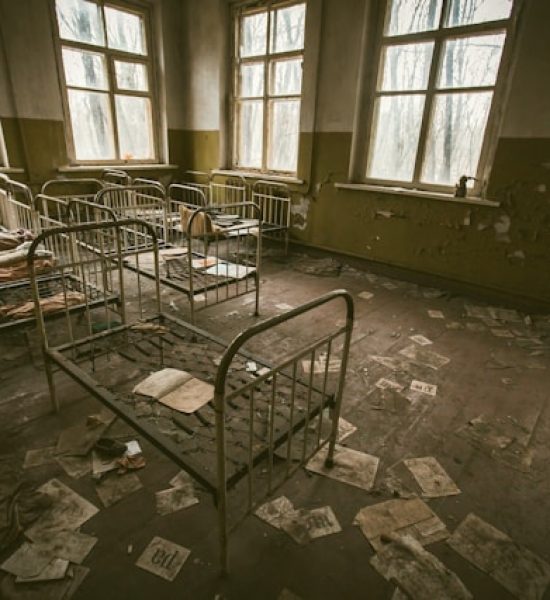Vacant buildings, whether residential or commercial, present a unique Why Ensure Vacant Building Challenge to owners and communities.

Introduction: Vacant buildings, whether residential or commercial, present a unique set of challenges and risks for property owners and communities alike from the threat of vandalism and deterioration to the economic impact on neighborhoods, understanding the complexities of vacant buildings is crucial to this article, we delve into the various aspects of vacant buildings, exploring the reasons behind their vacancy, the risks they pose, and strategies for addressing these challenges with Why ensure vacant building Challenges.
The Causes of Vacancy: Vacant buildings can result from a multitude of factors. Economic downturns, changes in property ownership, and urban decay are just a few examples. Properties may become vacant due to abandonment, foreclosure, or neglect. Additionally, buildings under construction or renovation may temporarily sit unoccupied. Understanding the underlying causes of vacancy is essential for developing effective solutions with Why ensure vacant building Challenges.
The Risks and Challenges: Vacant buildings pose significant risks to both property owners and the surrounding community. One of the most pressing concerns is security. Unoccupied buildings are prime targets for vandalism, theft, and arson, leading to property damage and safety hazards. Moreover, neglected vacant buildings can become havens for squatters, drug activity, and other criminal behavior, further exacerbating safety concerns.
Another challenge associated with vacant buildings is their impact on property values and neighborhood vitality. Vacant properties can contribute to blight and decline, affecting the attractiveness and desirability of surrounding areas. Decreased property values and lost tax revenue are common consequences, placing a strain on local governments and communities with Why ensure vacant building Challenges.
Furthermore, vacant buildings are susceptible to deterioration and decay over time. Without proper maintenance and upkeep, structural issues, mold, and pest infestations can develop, leading to further degradation of the property.
Addressing Vacant Buildings: Addressing the challenges posed by vacant buildings requires a multifaceted approach involving collaboration between property owners, local governments, community organizations, and other stakeholders.
- Property Maintenance: Property owners should prioritize regular maintenance and upkeep of vacant buildings to prevent deterioration and ensure structural integrity. This includes securing doors and windows, addressing any structural deficiencies, and maintaining the exterior appearance of the property.
- Security Measures: Implementing robust security measures is essential for protecting vacant buildings from vandalism, theft, and unauthorized entry. Measures such as installing security cameras, alarms, and fencing can help deter criminal activity and enhance property security.
- Community Engagement: Engaging with the local community is crucial for addressing vacant buildings effectively. Community organizations, neighborhood associations, and local governments can collaborate to identify vacant properties, raise awareness of their impact, and develop strategies for revitalization.
- Redevelopment and Repurposing: Where feasible, vacant buildings can be repurposed or redeveloped to meet the needs of the community. Adaptive reuse projects can breathe new life into vacant properties, creating opportunities for housing, commercial spaces, or community facilities.
- Policy Interventions: Local governments can implement policies and ordinances aimed at addressing vacant buildings, such as vacant property registration programs, property tax incentives for redevelopment, and code enforcement measures to ensure compliance with maintenance standards.
Conclusion: Vacant buildings represent a complex and multifaceted issue with far-reaching implications for property owners, communities, and local economies. By understanding the causes and risks associated with vacant buildings and implementing proactive strategies for addressing them, stakeholders can work together to mitigate the negative impact of vacancy and foster vibrant, thriving neighborhoods for the benefit of all.
A vacant building is a property that is not currently being used or occupied by tenants, owners, or occupants. Vacant buildings can include residential properties such as houses, apartments, or condominiums, as well as commercial properties such as offices, retail spaces, warehouses, or industrial facilities.
Insuring a vacant building can be a bit more complicated than insuring an occupied one because vacant properties often pose higher risks to insurers. Here’s a step-by-step guide on how to insure a vacant building:
- Understand the Risks: Vacant buildings are more susceptible to vandalism, theft, fire, water damage, and other perils. Insurance companies may view them as higher risk because there are no occupants to notice and mitigate potential hazards.
- Contact Your Current Insurer: If you already have insurance coverage for other properties, start by contacting your current insurer to see if they offer coverage for vacant buildings. They may be able to extend your existing policy or offer a separate policy for the vacant property.
- Specialized Insurers: Some insurance companies specialize in insuring vacant properties. Look for insurers that offer coverage specifically tailored to vacant buildings. These companies understand the unique risks associated with vacant properties and may offer more comprehensive coverage.
- Assess Your Coverage Needs: Determine the level of coverage you need for the vacant building. Consider factors such as the property’s value, location, condition, and any potential liabilities. Make sure you understand what perils are covered and any exclusions in the policy.
- Provide Detailed Information: When applying for insurance, be prepared to provide detailed information about the vacant building, including its location, size, condition, previous claims history, and any security measures in place.
- Security Measures: Insurance companies may require certain security measures to be in place to reduce the risk of vandalism and theft. This could include installing alarms, security cameras, and securing doors and windows.
- Vacancy Permit: Some insurance companies may require you to obtain a vacancy permit if the building will be vacant for an extended period. This permit may come with certain requirements or conditions that must be met to maintain coverage.
- Review Policy Terms Carefully: Once you receive quotes from insurance companies, carefully review the terms and conditions of each policy. Pay attention to coverage limits, deductibles, exclusions, and any endorsements or add-ons that may be available.
- Consider Additional Coverage: Depending on your needs and budget, you may want to consider additional coverage options such as liability insurance, flood insurance, or coverage for business interruption.
- Regularly Monitor the Property: Even with insurance coverage in place, it’s important to regularly monitor the vacant building for any signs of damage or potential hazards. Promptly address any issues to minimize the risk of a claim being denied due to negligence.
Remember to shop around and compare quotes from multiple insurance providers to ensure you get the best coverage at a competitive price for your vacant building.
There are various reasons why a building may become vacant:
- For Sale or Lease: A building may be vacant if it is listed for sale or lease, awaiting a buyer or tenant.
- Under Construction or Renovation: Buildings undergoing construction, renovation, or repair may be temporarily vacant until the work is completed.
- Abandonment: In some cases, buildings may become vacant due to abandonment by owners or tenants, often due to financial difficulties or property disputes.
- Foreclosure or Bankruptcy: Properties may become vacant as a result of foreclosure proceedings or bankruptcy filings by owners or previous occupants.
- Seasonal or Temporary Vacancy: Some properties, such as vacation homes or seasonal businesses, may remain vacant during certain times of the year when they are not in use.
- Neglect or Disrepair: Buildings that are in a state of disrepair or are deemed unsafe for occupancy may become vacant if occupants are forced to leave or choose to vacate voluntarily.
Vacant buildings pose various risks and challenges, including increased vulnerability to vandalism, theft, fire, and deterioration. Therefore, it’s important for property owners to properly secure and maintain vacant buildings and consider obtaining insurance coverage tailored to the unique risks associated with unoccupied properties. Additionally, local regulations and ordinances may impose requirements or restrictions on the maintenance and security of vacant buildings to prevent blight and ensure public safety.
While insuring a vacant building is important, there are some potential disadvantages or challenges associated with it:
- Higher Premiums: Insurance companies often charge higher premiums for insuring vacant buildings compared to occupied ones. This is because vacant properties are at higher risk for vandalism, theft, and other perils due to the lack of supervision and maintenance.
- Limited Coverage Options: Finding comprehensive coverage for vacant buildings can be more challenging than insuring occupied properties. Some insurers may offer limited coverage options or impose higher deductibles and stricter conditions for vacant properties.
- Vacancy Restrictions: Insurance policies for vacant buildings may come with specific requirements or restrictions, such as regular property inspections, security measures, or shorter policy terms. Failure to comply with these requirements could result in policy cancellation or denial of claims.
- Exclusions and Limitations: Insurance policies for vacant buildings often come with exclusions and limitations, such as coverage restrictions for certain perils or limited coverage for personal property left inside the building. Property owners need to carefully review policy terms to understand what is covered and what is not.
- Increased Risk Perception: Some insurers may perceive vacant properties as higher risk and may be more cautious about offering coverage or may charge even higher premiums if the property has a history of previous claims or is located in a high-crime area.
- Difficulty in Finding Coverage: Depending on the condition, location, and duration of vacancy, property owners may find it challenging to find insurance coverage for their vacant building. They may need to shop around extensively or work with specialized insurers offering vacant properties coverage.
- Cost-Benefit Analysis: Property owners must weigh the costs of insurance premiums against the potential risks and losses associated with leaving the building uninsured. In some cases, property owners may decide that the cost of insurance outweighs the benefits, especially if the property is expected to remain vacant for an extended period.
Overall, while insuring a vacant building is essential for protecting against potential losses and liabilities, property owners need to consider the associated disadvantages and carefully evaluate their insurance needs and options.
Insuring vacant buildings is indeed important for several reasons:
- Protection against Losses: Vacant buildings are more vulnerable to various risks such as vandalism, theft, fire, water damage, and natural disasters. Insurance coverage helps mitigate financial losses resulting from these perils.
- Liability Coverage: Even if a building is vacant, property owners can still be held liable for injuries or accidents on the premises. Liability coverage included in vacant building insurance helps protect against potential lawsuits and associated costs.
- Financial Security: Without insurance, property owners would be solely responsible for covering the costs of repairing or rebuilding a vacant building in the event of damage or destruction. Insurance provides financial security by helping to cover these expenses, preventing significant financial burdens.
- Compliance with Lender Requirements: If the vacant building is mortgaged, the lender may require insurance coverage to protect their investment. Failure to maintain insurance could result in defaulting on the loan.
- Maintaining Property Value: Insurance coverage helps maintain the property’s value by ensuring that necessary repairs or reconstruction can be carried out promptly after an insurable event. This is important for preserving the property’s resale or rental value.
- Peace of Mind: Knowing that a vacant building is adequately insured provides peace of mind to property owners, reducing stress and worry about potential financial losses.
While insuring vacant buildings may involve higher premiums due to the increased risks associated with unoccupied properties, the protection and peace of mind it offers outweigh the costs for many property owners.




